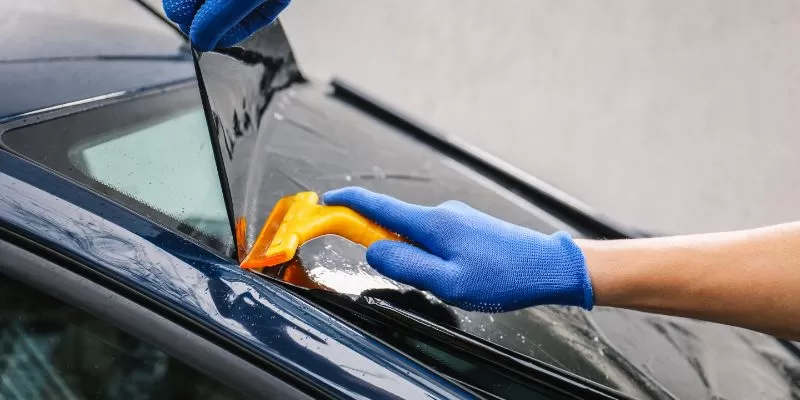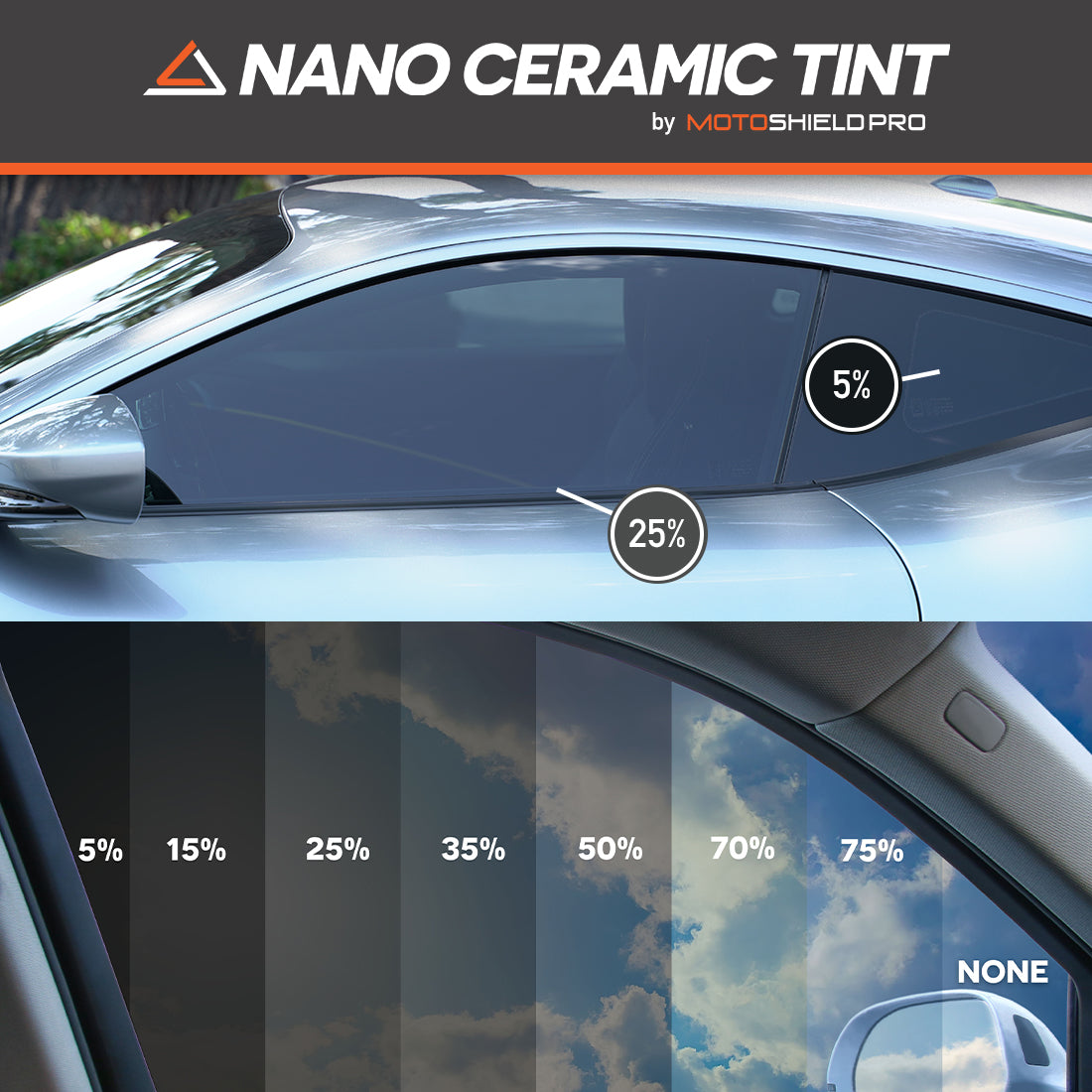How Auto Window Tinting Shields Your Car's Interior
How Auto Window Tinting Shields Your Car's Interior
Blog Article
Home Window Tinting Rules and Guidelines: What You Need to Know Before Tinting Your Automobile
Prior to continuing with home window tinting for your automobile, it is crucial to acquaint yourself with the varied regulations and standards that control this method across various states. These guidelines determine the allowable degrees of color darkness, usually measured by visible light transmission (VLT) percentages, and consist of particular specifications for front windscreens intended at making certain roadway safety.
Summary of Home Window Tinting Rules
Home window tinting laws are often based on variant throughout different territories, showing neighborhood laws and safety factors to consider. These laws dictate the permissible degrees of tint darkness and reflectiveness on vehicle windows, making certain that vehicle drivers maintain appropriate exposure while likewise securing versus hazardous UV rays and heat.
Many guidelines categorize window tinting based on the Visible Light Transmission (VLT) percent, which shows the quantity of light that can pass via the home window. Usually, lower VLT portions symbolize darker colors. Regulations commonly set apart between the front, side, and back home windows, with stricter constraints used to the front windshield to boost safety for both the motorist and various other road users.
Conformity with home window tinting regulations is important, as offenses can result in fines, mandatory elimination of the color, and prospective increases in insurance costs. It is essential for car proprietors to acquaint themselves with neighborhood regulations prior to proceeding with home window tinting setups.
State-by-State Color Laws
Comprehending the certain window tinting policies in each state is vital for vehicle owners looking for to comply with the legislation. Each state in the U.S. has developed its very own collection of guidelines regulating home window tinting, which can vary dramatically. These regulations typically determine the allowable levels of tint darkness, the kinds of home windows that can be tinted, and any kind of medical exceptions that may apply.
For instance, states like California have stringent limitations on color darkness for front home windows, while others, such as New Mexico, may enable darker colors. In addition, particular states mandate particular presence portions for various windows, consisting of the windshield, front side home windows, and back windows. It is crucial for vehicle owners to familiarize themselves with their state's regulations to prevent possible penalties or fines.
Additionally, some states might require a qualification sticker label to be positioned on colored home windows, suggesting compliance with state legislations. Failing to abide by these regulations not just runs the risk of legal effects however can likewise impact security and exposure while driving. Car owners should perform detailed study or consult regional authorities to make sure full understanding and conformity with state-by-state color regulations.
Allowed Tint Degrees and Kinds
Several automobile owners may be shocked to discover that permitted color degrees and kinds vary commonly throughout various states. Each state has developed its very own policies regarding the allowable darkness and reflectivity of home window color, often determined by Visible Light Transmission (VLT) percentages. VLT refers to the amount of light that can go through the tinted home windows; hence, a reduced percentage suggests a darker color.

Furthermore, the sorts of tint products enabled can vary, with some states restricting metallic or mirror-like surfaces. It is necessary for lorry proprietors to acquaint themselves with their state's particular legislations to ensure conformity. Non-compliance can result in penalties, required elimination of the tint, or other lawful consequences, making it vital to understand these guidelines prior to proceeding with setup.
Medical Exemptions for Tinting
While not all states provide allowances for clinical exemptions relating to window tinting, those that do identify the need for certain people to improve visibility and comfort as a result of clinical conditions. Various medical conditions, such as lupus, skin cancer cells, and certain eye conditions, can provide people specifically sensitive to sunshine. As a result, these people might need darker tints to secure themselves from harmful UV rays and glare.

It is necessary to note that despite a medical exception, there may still be constraints on the level of tint permitted. Conformity with state regulations guarantees that individuals are both safeguarded and within lawful limitations. Those thinking about medical exceptions need to contact their regional Department of Motor Automobiles or comparable authority to understand the treatments and requirements necessary to look for an exemption efficiently.
Fines for Non-Compliance
Failing to follow home window tinting regulations can result in substantial penalties, which vary by state. Law enforcement companies are empowered to provide citations for lorries that do not adhere to the defined tinting policies. These fines usually include penalties, which can vary from moderate total up to a number of hundred dollars, relying on the seriousness of the violation and the state in inquiry.
In some jurisdictions, duplicated offenses may cause rising fines or additional charges, such as obligatory court appearances. Additionally, non-compliance may require the elimination of unlawful tinting, often at the proprietor's expense. In severe cases, habitual wrongdoers might face suspension of their car enrollment up until conformity is achieved.
Additionally, insurance coverage implications might emerge from receiving numerous citations for window color offenses. Insurance firms may view such violations as an indication of riskier actions, possibly leading to raised costs or trouble in insurance coverage.
To stay clear of these charges, it is vital for car owners to familiarize themselves with their regional window tinting directory laws and make sure that their lorry complies (Window Tinting). This aggressive technique not just prevents lawful implications however also promotes road safety
Final Thought

Most policies identify home window tinting based on the Visible Light Transmission (VLT) percent, which shows the amount of light that can pass through the window. Compliance with window tinting policies is critical, as offenses can result in fines, obligatory removal of the color, and prospective boosts in insurance policy costs.Recognizing the certain home window tinting regulations in each state is essential for vehicle proprietors looking for to conform with the legislation. These laws usually determine the permitted degrees of color darkness, the kinds of home windows that can be tinted, and any kind of clinical exemptions that might apply.
For instance, states like The golden state have stringent constraints on tint darkness for front home windows, while others, such as New Mexico, may enable darker colors.
Report this page